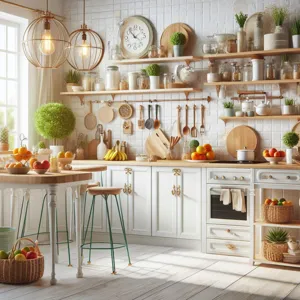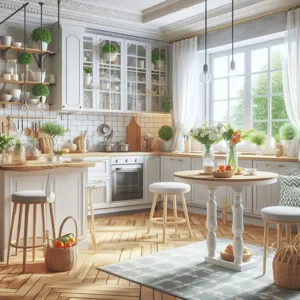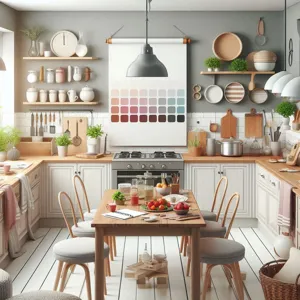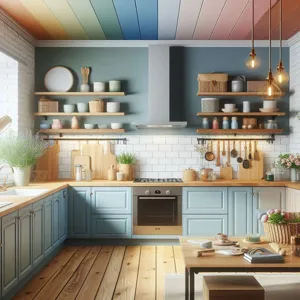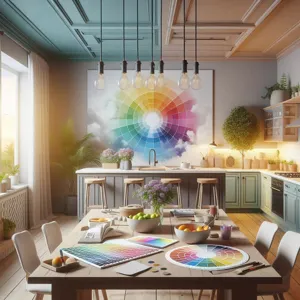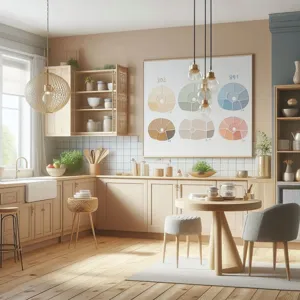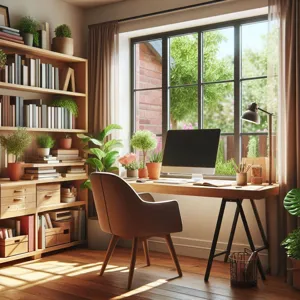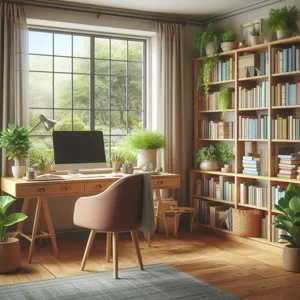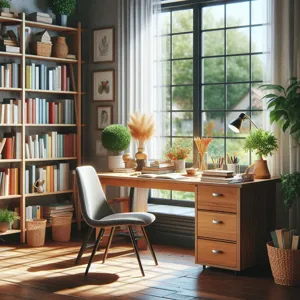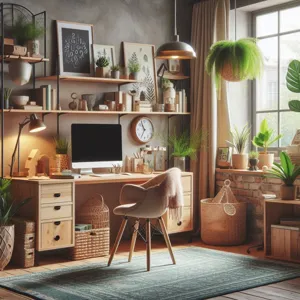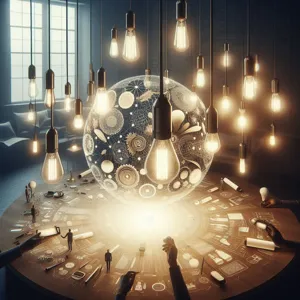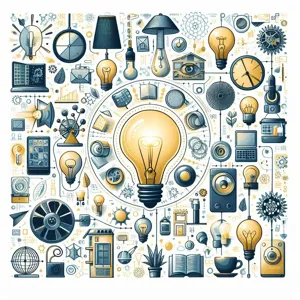The universe is a vast, enigmatic tapestry woven with celestial wonders, and among its most intriguing threads are pulsars—exotic remnants of supernova explosions that pulse rhythmically with incredible precision.
These stellar beacons captivate astronomers and space enthusiasts alike, offering glimpses into the fundamental workings of the cosmos. With their distinctive rotating nature and powerful emissions, pulsars serve as cosmic lighthouses, guiding our understanding of space-time, gravity, and the life cycle of stars. In this blog post, we will embark on an astronomical journey to explore the fascinating world of pulsars, delving into their various types, unique characteristics, and the profound implications they hold for our understanding of the universe. Join us as we unravel the mysteries of these celestial phenomena and illuminate the crucial role they play in the grand narrative of the cosmos.
1. Introduction to Pulsars: What Are They?

Pulsars are among the most intriguing celestial objects in the universe, capturing the imagination of astronomers and enthusiasts alike. These highly magnetized, rotating neutron stars emit beams of electromagnetic radiation that sweep through space, much like the beam of a lighthouse. As these beams rotate, they create a pulsing effect that can be detected from Earth, giving pulsars their name. This mesmerizing phenomenon occurs when the rotation axis of the star is misaligned with its magnetic axis, resulting in a lighthouse-like emission of energy.
The birth of a pulsar begins with the catastrophic death of a massive star, which reaches the end of its life cycle in a supernova explosion. What remains after this explosive event is an incredibly dense core, composed almost entirely of neutrons. The immense gravitational forces within this core cause it to collapse, resulting in a compact object with a radius of only about 10 kilometers, yet possessing a mass greater than that of the Sun. This dense concentration of matter is what allows pulsars to exhibit such extraordinary properties.
Pulsars come in various types, which can be broadly categorized based on their rotational characteristics and the nature of their emissions. The most well-known type is the millisecond pulsar, which rotates at astonishing speeds—sometimes hundreds of times per second. In contrast, regular pulsars rotate much more slowly, with periods that can vary from a few milliseconds to several seconds. each type provides valuable insights into the fundamental laws of physics, including gravitational waves, matter under extreme conditions, and the behavior of magnetic fields.
As we delve deeper into the cosmos, the study of pulsars not only enhances our understanding of stellar evolution and the lifecycle of stars, but also opens up new avenues for exploring the universe’s mysteries. From their formation to their role in gravitational wave detection, pulsars are a testament to the beauty and complexity of the cosmos, and they continue to be a focal point of astronomical research and discovery.
2. The Discovery of Pulsars: A Historical Perspective
The discovery of pulsars is a fascinating tale woven into the fabric of modern astrophysics, marked by serendipity and groundbreaking scientific inquiry. It all began in 1967, when a young astrophysicist named Jocelyn Bell Burnell was conducting her research at the University of Cambridge. As part of her thesis work, she was monitoring radio signals from the sky using a powerful new radio telescope. One day, she noticed a peculiar, regular pulsing signal that seemed to repeat every 1.33 seconds. Initially, the team thought it could be a signal from an extraterrestrial civilization, playfully dubbing it “LGM-1,” short for “Little Green Men.”
However, as they continued their observations, it became clear that what they had stumbled upon was not a sign of alien life, but rather a new type of astronomical object—pulsars. This groundbreaking discovery shattered previous assumptions about neutron stars and opened up a new frontier in astrophysics. Pulsars, which are rapidly rotating neutron stars emitting beams of radiation, were confirmed to emit these signals in a highly regular manner, much like a cosmic lighthouse.
The excitement surrounding this discovery was palpable, leading to further observations and the identification of additional pulsars in the following years. Each subsequent discovery added depth to our understanding of these enigmatic objects and contributed to the development of theories about their formation and behavior. By 1974, the first binary pulsar was found, which would later provide compelling evidence for the existence of gravitational waves—another monumental leap in our understanding of the universe.
In recognition of her pivotal role in this discovery, Jocelyn Bell Burnell was honored with various accolades, though controversially, the Nobel Prize awarded in 1974 went to her male colleagues, Tony Hewish and Martin Ryle. Nevertheless, the impact of her work remains indelible in the field of astrophysics, inspiring generations of scientists and amateurs alike to explore the mysteries of the cosmos. The story of pulsars is not just a tale of discovery; it is a reminder of the importance of curiosity and perseverance in the pursuit of knowledge about the universe and our place within it.
3. How Pulsars are Formed: The Life Cycle of a Star

To grasp the enigmatic nature of pulsars, we must first journey into the life cycle of stars, where these celestial beacons originate. Pulsars are the remnants of massive stars that have reached the end of their life cycle, a process that begins with stellar birth in nebulae—vast clouds of gas and dust. Over millions of years, gravity pulls these materials together, and as the core heats up, nuclear fusion ignites, giving birth to a new star.
As the star ages, it undergoes significant changes. For a typical star similar to our Sun, this phase can last billions of years, eventually leading to a stable state known as the main sequence. However, for massive stars (those with at least eight times the mass of the Sun), the journey takes a different path. When these stars exhaust their nuclear fuel, they no longer have the energy to counteract gravitational collapse. This leads to a dramatic end—a supernova explosion, one of the most violent events in the universe.
In the aftermath of a supernova, what remains of the original star can form a neutron star—a dense, compact object comprised almost entirely of neutrons. The core, now incredibly dense, spins rapidly, often at astonishing speeds of several hundred rotations per second. If this neutron star has a strong magnetic field, the charged particles within can create beams of electromagnetic radiation that sweep across space. If these beams happen to be directed toward Earth, we detect them as regular pulses of radiation, hence the name “pulsars.”
Different types of pulsars emerge from this process, each with distinct characteristics based on factors such as their rotation speed and magnetic field strength. Millisecond pulsars, for example, spin at incredibly high speeds, while magnetars are a type of pulsar with an extraordinarily strong magnetic field, capable of producing intense bursts of X-rays and gamma rays. Understanding the formation and evolution of pulsars not only deepens our knowledge of stellar life cycles but also opens the door to exploring the fundamental laws of physics that govern our universe.
4. The Different Types of Pulsars: An Overview
Pulsars, those celestial beacons of radio waves, come in a variety of types, each with its own unique characteristics and mysteries waiting to be unraveled. Understanding the different types of pulsars is crucial for astronomers as they delve into the underlying physics of these stellar remnants and their role in the universe.
**1. Rotation-powered Pulsars**: The most common type, rotation-powered pulsars, are neutron stars that emit beams of radiation from their magnetic poles. As they rotate—often at astonishing speeds—these beams sweep across space like a lighthouse, producing regular pulsing signals detectable by radio telescopes. Their rapid rotation can be a spectacle, with some spinning as fast as several hundred times per second!
**2. Millisecond Pulsars**: A subclass of rotation-powered pulsars, millisecond pulsars are incredibly fast, rotating in mere milliseconds. These pulsars are believed to have gained their rapid spin through the process of accretion from a companion star. Their extreme stability makes them valuable tools for testing theories of gravity and measuring cosmic distances.
**3. Magnetars**: While they are still classified as neutron stars, magnetars possess magnetic fields that are trillions of times stronger than those of typical pulsars. This immense magnetism leads to unpredictable bursts of X-rays and gamma rays, making magnetars an intriguing subject of study in high-energy astrophysics.
**4. X-ray Pulsars**: These pulsars are identified by their X-ray emissions, which result from the accretion of material from a stellar companion. As matter spirals onto the neutron star, it accelerates and heats up, producing X-rays that can be detected by space-based observatories. X-ray pulsars often exhibit variability in their pulsation rates and can provide insights into the behavior of matter under extreme gravitational conditions.
**5. Binary Pulsars**: Found in systems with two stars, binary pulsars have a companion star that can influence their rotational dynamics. The interaction between the pulsar and its companion can produce fascinating phenomena, such as the emission of gravitational waves or changes in the pulsar’s spin rate.
Each type of pulsar offers a unique window into the universe, shedding light on the fundamental forces at play in the cosmos. As astronomers continue to study these stellar phenomena, we can expect to uncover even more about the life cycles of stars and the intricate dance of celestial bodies in the vast expanse of space. Whether it’s the regular blips of a rotation-powered pulsar or the explosive bursts of a magnetar, the diverse types of pulsars enrich our understanding of the universe and remind us of the wonders that lie beyond our world.
5. Millisecond Pulsars: The Fastest Rotating Stars

Millisecond pulsars represent one of the most fascinating phenomena in the universe, captivating astronomers and astrophysicists alike with their extraordinary speed and precision. These celestial objects are a subtype of pulsars, rotating at astonishing rates of up to several hundred times per second. To put this into perspective, imagine a star spinning so rapidly that it completes a full rotation in just a fraction of a second—a feat that defies our understanding of stellar physics.
The birth of a millisecond pulsar typically occurs in a binary system, where one star, often a neutron star, accretes material from its companion. As matter spirals into the pulsar, it transfers angular momentum, causing the pulsar to spin faster and faster. This accretion process can dramatically alter the pulsar’s rotational period, leading to its classification as a millisecond pulsar once it spins at a rate exceeding 1.5 milliseconds per rotation.
What makes millisecond pulsars particularly interesting is their stability and predictability. They emit beams of electromagnetic radiation that sweep across the cosmos like lighthouse beams, producing incredibly regular pulsations that can be measured with high precision. This regularity allows astronomers to use millisecond pulsars as cosmic clocks, providing insights into fundamental questions about gravity, space-time, and the very fabric of the universe.
Furthermore, millisecond pulsars have become invaluable tools in the search for gravitational waves. Their predictable timing can reveal disturbances in space-time caused by the collision of massive objects, offering an indirect method of detecting these elusive ripples. As researchers continue to study millisecond pulsars, they unlock new chapters in our understanding of the cosmos, offering glimpses into the extreme conditions and processes that govern the life cycles of the universe’s most enigmatic objects. In the grand tapestry of the cosmos, millisecond pulsars shine brightly, reminding us of the wonders that lie beyond our planet and the mysteries still waiting to be unraveled.
6. Magnetars: The Most Magnetic Objects in the Universe
Magnetars are one of the most fascinating and extreme types of pulsars in the universe, captivating astronomers and astrophysicists alike with their extraordinary magnetic fields and energetic emissions. These stellar remnants, formed from the collapse of massive stars during supernova explosions, possess magnetic fields that are a staggering trillion times stronger than Earth’s. To put this into perspective, if a magnetar were placed near our planet, it could distort the atomic structure of nearby materials and even affect the electronics in our households.
The intense magnetic fields of magnetars are not just a curiosity; they are responsible for a range of spectacular phenomena. These fields are so powerful that they can generate bursts of gamma rays and X-rays, making magnetars some of the brightest and most energetic objects in the cosmos. When these outbursts occur, they can release as much energy in a fraction of a second as the Sun will emit over its entire lifetime!
Magnetars can be categorized into two main types: the Soft Gamma Repeaters (SGRs) and the Anomalous X-ray Pulsars (AXPs). SGRs are known for their sporadic bursts of gamma-ray emissions, which can be detected from Earth, while AXPs emit X-rays with a steady pulse, offering a glimpse into their incredible rotational dynamics and magnetic behavior.
Observing magnetars is a challenge due to their distance and the rarity of their outbursts, but when they do flare up, they provide invaluable data that helps scientists understand the fundamental laws of physics under extreme conditions. Each magnetar serves as a natural laboratory, allowing researchers to study the effects of magnetic fields on matter and energy at levels we cannot replicate on Earth. As we continue to explore these cosmic enigmas, magnetars remind us of the vastness of the universe and the astonishing phenomena that lie beyond our planet.
7. Binary Pulsars: Insights into Gravitational Waves

Binary pulsars are among the most fascinating celestial objects in the universe, serving as cosmic laboratories for studying the fundamental forces of nature, particularly gravitational waves. These extraordinary systems consist of two neutron stars orbiting each other, with one of them emitting regular pulses of radio waves. As they orbit, these pulsars provide unique insights not only into their own properties but also into the nature of gravity itself.
One of the most compelling aspects of binary pulsars is their ability to confirm predictions made by Einstein’s general theory of relativity. As the two neutron stars spiral closer together due to the emission of gravitational waves, they lose energy, causing their orbital period to decrease over time. This dramatic dance offers a rare opportunity to measure the effects of gravitational waves directly. In fact, the famous Hulse-Taylor binary pulsar, discovered in 1974, provided the first indirect evidence of gravitational waves, earning the discoverers a Nobel Prize in Physics.
Additionally, binary pulsars can be used to test the limits of our understanding of the universe. By analyzing the timing of the pulsar’s signals, astrophysicists can glean information about the stars’ masses, the curvature of spacetime around them, and even the composition of the interstellar medium through which their signals travel. The precision with which we can measure these phenomena is unmatched, making binary pulsars essential tools in modern astrophysics.
As we venture deeper into the cosmos, the study of binary pulsars continues to reveal profound insights into the workings of the universe. Their rhythmic pulses serve as beacons, illuminating the mysteries of gravitational waves and challenging our understanding of gravity, space, and time. The evolution of these stellar systems not only enhances our knowledge of neutron stars but also paves the way for future discoveries that could reshape our understanding of the cosmos itself.
8. The Science Behind Pulsar Timing and Its Applications
Pulsars, the celestial beacons of our universe, are not just fascinating cosmic phenomena; they also serve as remarkable tools for understanding the fabric of space and time itself. The science of pulsar timing involves a detailed analysis of the precise intervals at which these neutron stars emit their beams of radiation. By measuring these intervals with incredible accuracy, scientists can unlock a wealth of information about pulsars and their surrounding environments.
The timing of pulsars is influenced by various factors, including their rotation period, orbital dynamics if they are in binary systems, and even gravitational waves. Each pulse from a pulsar acts like a cosmic clock, and by studying the regularity and timing of these pulses, researchers can glean insights into fundamental physics as well as astrophysical phenomena.
One of the most exciting applications of pulsar timing is in the search for gravitational waves, ripples in spacetime caused by massive cosmic events like merging black holes or neutron stars. By monitoring an array of pulsars distributed across the sky, scientists can detect tiny variations in the timing of their pulses caused by these waves, providing a novel method for observing some of the most violent processes in the universe.
Moreover, pulsar timing has practical applications in navigation. The precise timing of pulsars can help improve the accuracy of spacecraft navigation systems, allowing for better guidance and positioning during deep-space missions. Some researchers even envision a future where pulsar-based navigation systems could rival GPS on Earth, providing reliable positioning references across the vast distances of space.
Ultimately, the science behind pulsar timing enriches our understanding of the cosmos while simultaneously opening up new frontiers in technology and exploration. As we continue to unravel the mysteries of pulsars, we not only gain a deeper appreciation for these extraordinary celestial objects but also expand our capacity to navigate and understand the universe around us.
9. Pulsar Navigation: A New Frontier in Space Travel
As we stand at the precipice of a new era in space exploration, pulsar navigation is emerging as a groundbreaking method that could revolutionize how we traverse the vastness of the cosmos. Unlike traditional navigation methods that rely on GPS, which is ineffective beyond Earth’s atmosphere, pulsar navigation utilizes the unique and predictable signals emitted by pulsars—rapidly rotating neutron stars that emit beams of radiation with astonishing regularity.
Imagine a spacecraft equipped with a sophisticated array of sensors capable of detecting these pulsar signals. By triangulating the arrival times of signals from multiple pulsars, the spacecraft can accurately determine its position in the universe. This innovative approach offers several advantages: pulsars are scattered throughout the galaxy and are incredibly stable in their emissions, making them reliable celestial landmarks. Moreover, they are not subject to the same limitations as terrestrial navigation systems, which can be disrupted by various factors such as solar flares or atmospheric conditions.
The implications of pulsar navigation extend beyond mere positioning. As humanity embarks on longer and more ambitious missions—to Mars, the moons of Jupiter, or even beyond—having a dependable navigation system becomes crucial. The vast distances involved in deep space travel mean that waiting for a signal to return from Earth can result in significant delays, making real-time navigation via pulsars not just advantageous, but essential.
Research into this promising technology is already underway, with projects like the European Space Agency’s (ESA) Pulsar Timing Array aiming to develop and refine these systems for practical use. If successful, pulsar navigation could provide astronauts with a newfound sense of direction among the stars, paving the way for exploration that was once confined to the realm of science fiction. As we unlock the secrets of pulsars and harness their potential, we take one step closer to making the dream of interstellar travel a reality.
10. The Role of Pulsars in Understanding the Universe’s Evolution
Pulsars, those mesmerizing cosmic lighthouses, play an instrumental role in unraveling the complex tapestry of our universe’s evolution. As remnants of massive stars that have exploded in supernovae, pulsars are not just fascinating celestial objects; they are also vital tools for astronomers seeking to decode the history of the cosmos. Each pulsar emits beams of electromagnetic radiation, which sweep across space as the star rotates. This rhythmic pulsation allows scientists to observe and measure phenomena that would otherwise remain hidden.
One of the most significant contributions of pulsars to our understanding of the universe is their ability to test the laws of physics under extreme conditions. For instance, the study of millisecond pulsars—rapidly spinning remnants of old stars—provides insight into the behavior of matter at densities far beyond what we experience on Earth. These pulsars emit radiation with such precision that they can be likened to cosmic clocks, allowing researchers to explore the effects of gravitational waves and the fabric of spacetime itself.
Moreover, the distribution and characteristics of pulsars in our galaxy offer clues about its formation and evolution. By mapping the locations of pulsars, astronomers can infer the structure and dynamics of the Milky Way, revealing how stars are born, live, and die within this sprawling cosmic neighborhood. Pulsars also serve as a vital link in the study of neutron stars, providing clues about their composition and the extreme physics governing their existence.
In essence, pulsars are not just isolated beacons in the vastness of space; they are key players in the grand narrative of the universe. As we continue to explore their properties and behaviors, we inch closer to answering some of the most profound questions about the cosmos—its origins, its fate, and the fundamental laws that govern it. Through pulsars, we are not just observing the universe; we are actively participating in the ongoing quest to understand our place within it.
11. Recent Discoveries and Research on Pulsars
In recent years, the field of pulsar research has experienced a renaissance, propelled by advancements in technology and observational techniques. Astronomers have been turning their gaze to these fascinating celestial objects with renewed vigor, leading to a plethora of groundbreaking discoveries that are reshaping our understanding of the universe.
One of the most significant findings has been the detection of pulsars in binary systems, which has provided scientists with valuable insights into the nature of gravitational waves. The discovery of the first-ever millisecond pulsar, PSR J0045-7319, has not only expanded our catalog of known pulsars but also offered a unique laboratory for testing theories of relativity and stellar evolution. These fast-spinning neutron stars serve as cosmic clocks, allowing researchers to make precise measurements of time and space, and contributing to our understanding of fundamental physics.
Additionally, recent observations using the Parkes Observatory and the MeerKAT radio telescope in South Africa have uncovered a new class of pulsars known as “pulsating X-ray sources.” These enigmatic objects emit powerful X-rays and radio waves, revealing a complex interplay of magnetic fields and rotation that challenges previous models of pulsar behavior.
Furthermore, the discovery of “repeating” fast radio bursts (FRBs) has sparked a flurry of hypotheses regarding their origins. Some researchers suggest a connection between FRBs and certain types of pulsars, pushing the boundaries of our knowledge about the mechanisms driving these mysterious signals from deep space.
As we continue to improve our observational capabilities, including the deployment of next-generation telescopes and space-based observatories, the future of pulsar research holds the promise of even more remarkable findings. These discoveries not only enhance our comprehension of pulsars but also unlock new avenues for exploring the cosmos, ultimately bringing us closer to unraveling the mysteries of the universe.
12. The Future of Pulsar Studies: Upcoming Missions and Technology
As we stand on the brink of a new era in astrophysics, the future of pulsar studies is more promising than ever. Upcoming missions and advancements in technology are set to unveil even more complex secrets of these enigmatic celestial objects. The European Space Agency’s upcoming “LISA” (Laser Interferometer Space Antenna) mission aims to observe gravitational waves, which could potentially provide insights into the environments surrounding pulsars and their interactions with other cosmic phenomena.
Additionally, NASA’s planned “IXPE” (Imaging X-ray Polarimetry Explorer) mission promises to enhance our understanding of high-energy astrophysical objects, including pulsars. With its ability to measure polarization in X-rays, IXPE will offer a new perspective on the magnetic fields of pulsars, shedding light on how these fields influence their emissions and behaviors.
On the technological front, advancements in radio astronomy, such as the Square Kilometre Array (SKA), will revolutionize pulsar research. Once operational, the SKA will be the world’s largest radio telescope, capable of observing thousands of pulsars with unprecedented sensitivity and resolution. This will not only enhance our capacity for pulsar timing—critical for testing general relativity and probing gravitational waves—but also enable the discovery of new, previously undetectable pulsars.
Moreover, machine learning and artificial intelligence are set to play pivotal roles in pulsar studies. These technologies will streamline data analysis, helping astronomers sift through vast amounts of data generated by telescopes and identify pulsar signals more efficiently than ever before.
With these exciting developments on the horizon, the future of pulsar studies is boundless. As we harness innovative technologies and embark on ambitious missions, we inch closer to unlocking the mysteries of these fascinating cosmic lighthouses, enhancing our understanding of the universe and our place within it.
13. How to Observe Pulsars: Tips for Amateur Astronomers
Observing pulsars can be a thrilling endeavor for amateur astronomers, as these enigmatic celestial objects pulse with rhythm and mystery. While pulsars are typically detected using specialized radio telescopes, there are still ways for enthusiasts to engage with these fascinating phenomena using more accessible equipment and techniques.
1. **Start with Research**: Before you embark on your pulsar observation journey, it’s essential to familiarize yourself with pulsars and their characteristics. Read up on the various types—such as millisecond pulsars and magnetars—and understand their unique features. Websites like NASA and the Pulsar Search Collaboratory provide valuable resources and research articles that can deepen your knowledge.
2. **Choose the Right Equipment**: While professional-grade radio telescopes can detect pulsar signals, you can still explore them through optical means. A good quality telescope with a wide aperture can help you observe the regions of the sky where pulsars are located. For beginners, a pair of binoculars can also suffice to spot the brighter pulsars as points of light among the stars.
3. **Pick Your Timing**: Timing is crucial when attempting to observe pulsars. Many pulsars have specific rotation periods, and knowing when they are most visible can enhance your chances of spotting them. Use astronomy apps or software to track pulsar activity and determine the best nights for observation.
4. **Join a Community**: Engaging with local astronomy clubs or online communities can provide invaluable support and resources. These groups often organize star parties or observation events where you can gain insights from experienced astronomers and share tips on pulsar observation.
5. **Utilize Online Data**: Several online databases provide real-time data on pulsars, including their location, frequency, and characteristics. Websites like the Jodrell Bank Observatory or the National Radio Astronomy Observatory can help you locate specific pulsars and plan your observation sessions accordingly.
6. **Record Your Findings**: As you embark on your observations, keep a detailed log of your findings. Document the date, time, location, and any notable characteristics of the pulsars you observe. This practice not only enhances your understanding but also contributes to the larger astronomical community.
7. **Be Patient and Persistent**: Observing pulsars can be a challenging yet rewarding experience. Don’t be discouraged if you don’t spot them immediately; patience and persistence are key. The more you practice and engage with your equipment, the better your observational skills will become.
By immersing yourself in the world of pulsars and employing these tips, you’ll not only enhance your observational skills but also deepen your appreciation for the wonders of the cosmos. Each pulse of light is a reminder of the universe’s complexity and the incredible stories waiting to be uncovered. Happy stargazing!
14. Conclusion: The Significance of Pulsars in Modern Astronomy
In conclusion, pulsars represent one of the most fascinating phenomena in modern astronomy, serving as cosmic lighthouses that illuminate our understanding of the universe. Their precise and predictable rotation patterns allow astronomers to glean invaluable information about fundamental physics, the behavior of matter under extreme conditions, and the very fabric of spacetime itself. As we continue to explore these enigmatic celestial objects, we unveil not only the secrets of their formation and evolution but also their potential applications in practical technology, such as navigation systems based on pulsar timing.
The significance of pulsars extends beyond their scientific intrigue; they challenge our perceptions of the cosmos and inspire the next generation of astronomers and physicists. Each discovery related to pulsars opens new avenues for research, prompting us to ask deeper questions about the nature of gravity, the life cycles of stars, and the mysteries of dark matter. By studying these stellar remnants, we not only gain insight into the life and death of stars but also develop a richer context for understanding the universe at large.
As technology advances, enabling us to detect even fainter pulsars and analyze their structures with unprecedented detail, we stand on the brink of a new era in astrophysics. The ongoing quest to unravel the mysteries of pulsars will undoubtedly lead to groundbreaking discoveries that could reshape our understanding of the cosmos. Thus, pulsars are not merely celestial objects; they are vital keys to unlocking the mysteries of the universe, reminding us of how much there is still to learn and explore in the vast expanse of space.
15. Further Reading and Resources on Pulsars and Astronomy
To dive deeper into the captivating world of pulsars and expand your understanding of astronomy, a wealth of resources awaits you. Whether you are a seasoned astrophysicist or a curious newcomer to the field, these materials can enrich your knowledge and ignite your passion for the cosmos.
**Books**: Start with foundational texts such as “The Pulsar Handbook” by Richard W. Hulsart, which provides an in-depth examination of pulsar physics and their significance in the universe. For a broader exploration of astrophysics, “Astrophysics for People in a Hurry” by Neil deGrasse Tyson offers a concise yet engaging overview that touches on various cosmic phenomena, including pulsars.
**Online Courses**: Websites like Coursera and edX offer free online courses on astronomy and astrophysics. Look for courses that specifically address neutron stars and pulsars, as these can provide structured learning guided by experts in the field.
**Research Journals**: For those wanting to delve into cutting-edge discoveries, journals such as “The Astrophysical Journal” and “Monthly Notices of the Royal Astronomical Society” publish the latest research on pulsars and related topics. Accessing these can keep you updated on ongoing studies and significant advancements in pulsar science.
**Documentaries and Podcasts**: Visual learners may find inspiration in documentaries like “The Universe” series, which frequently features segments on neutron stars and pulsars. Additionally, podcasts such as “StarTalk” and “Astronomy Cast” offer fascinating discussions that break down complex concepts into digestible formats, often featuring interviews with leading astronomers.
**Astronomy Clubs and Online Communities**: Engaging with like-minded enthusiasts can enhance your learning experience. Join local astronomy clubs or online forums such as Reddit’s r/Astronomy or Stack Exchange, where you can ask questions, share insights, and participate in discussions about pulsars and broader astronomical topics.
By tapping into these resources, you can not only deepen your understanding of pulsars but also foster a greater appreciation for the vast and intricate universe we inhabit. Happy exploring!
As we conclude our journey through the captivating world of pulsars, we hope you’ve gained a deeper appreciation for these extraordinary cosmic phenomena. From the rhythmic beats of millisecond pulsars to the enigmatic behaviors of magnetars, each type offers a unique glimpse into the fundamental workings of the universe. Understanding pulsars not only enriches our knowledge of stellar evolution and the fabric of space-time but also fuels our curiosity about the cosmos. As we continue to explore the mysteries of the universe, may the wonders of pulsars inspire you to look up at the night sky with a sense of awe and intrigue. Thank you for joining us on this astronomical adventure, and we invite you to stay curious as we unravel more of the cosmos together!














